Jamie Cooks Italy: Jamie Oliver on why Nonna knows best
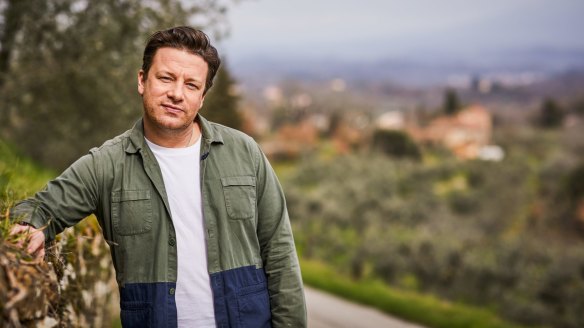
Villa Petrolo, Bucine, Italy: Jamie Oliver is in peak Oliver mode, hands flying as fast as the words spilling out of his mouth, his fingertips flitting across slices of beef, lightly dabbing olive oil into the freshly cooked meat that he is only now seasoning.
"The old way was to season it first and now the way is to cook it, slice it, season it – bit more precise," he explains, briefly looking up from his culinary masterpiece, oiled fingertips now in the air, spelling out each instruction like a conductor cueing a musical beat.
Oliver is holding court with 10 journalists from around the world including Good Food, whom he has invited to Tuscany to sample 25 dishes from his new and 25th cookbook Jamie Cooks Italy.
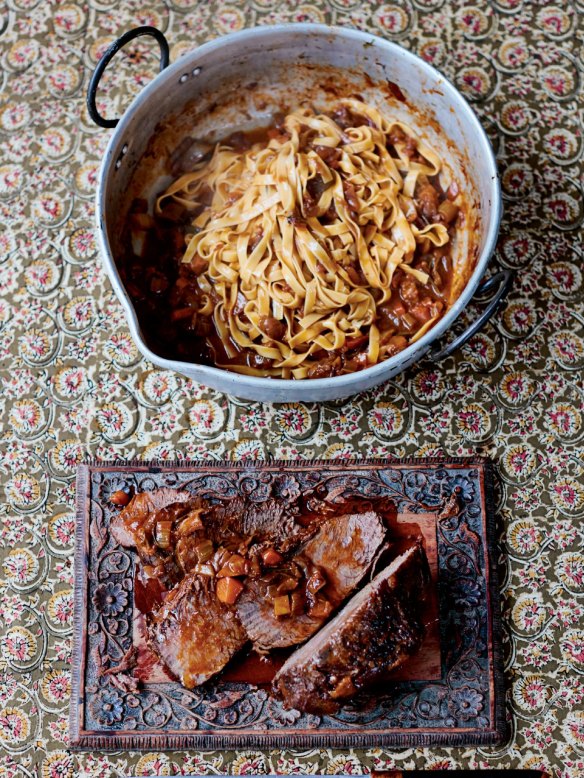
The book is dedicated to two men, Oliver's mentors and the godfathers of London's Italian food scene – collaborator Gennaro Contaldo and the late Antonio Carluccio – who nurtured his infatuation with what he describes as "one of the most loved cuisines on the planet full stop!"
But although dedicated to two men, Oliver's latest offering is a homage to women – Italy's famed nonnas and their "analogue" way of life some are still living, especially in Oliver's favoured "bit more crazy" southern regions where, he says, the weather, sea and geography combine to produce "incredible vegetables".
Oliver and Contaldo spent two years touring Italy for the accompanying television show interviewing the nonnas, found by British documentary makers who spent months in the field, cold-calling and doorknocking, scouting for their recipes and life-stories.
Nonnas wouldn't waste anything, rich or poor.
The slow-moving pace is an about-face given Oliver's more recent blockbusters have centred on whipping up meals within minutes.
Oliver is open about the pressure from "the people around me" to produce another 5 Ingredients – Quick & Easy Food, which last year topped Britain's bestseller list and was Australia's third-most purchased book. But the luxury of being one of the world's most successful cookbook authors means when he wants to slow down and make the book he's been dreaming of for years, he can, even if it's unlikely to beat previous bestselling records.
"It's never gonna be a commercial roller-coaster like Quick & Easy 5," he says. "But this Italian book and TV show has been really important for us.
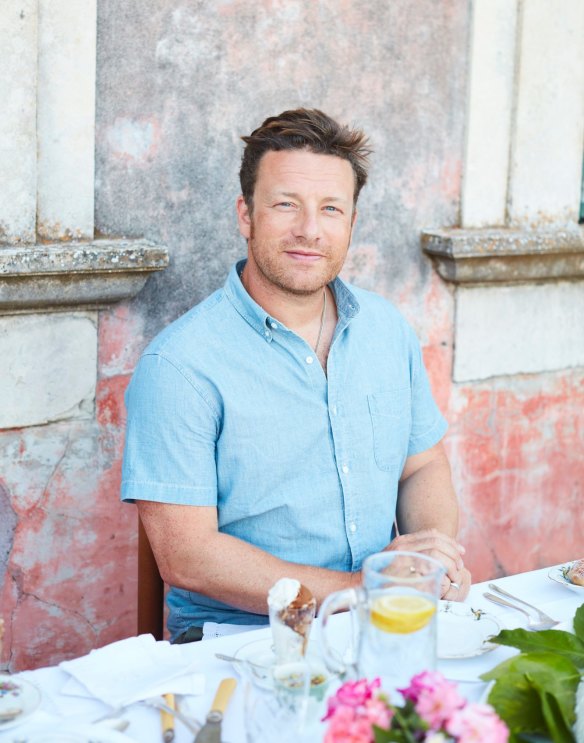
"We met these incredible women in a year when everyone's talking about women."
Oliver's time spent meeting "the keyholders of the best family cooking on the planet", who grew up in the shadows of the Great Depression and the Second World War with meager household budgets, have left him philosophical.
"Nonnas wouldn't waste anything – rich or poor by the way – and actually for 99 per cent of, probably 100 per cent of the nonnas, they would be eating vegetarian, vegan, five times a week anyway."
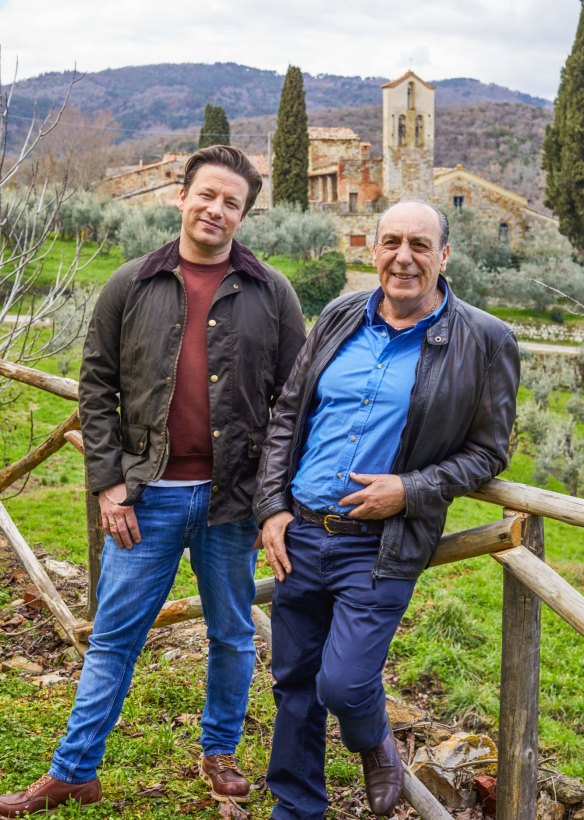
Production of the television show and cookbook went over time and over budget by an amount not even Oliver cares to find out.
"A million quid probably … but we don't care because it's a really important show for us – they [the nonnas] are dying.
"In a time of copyright and IP I can't take these women's recipes, you know. I can take inspiration, I can write recipes and I have done that, but sometimes they just grab you and say, 'Take it, take it, no one else is cooking it, take it'."
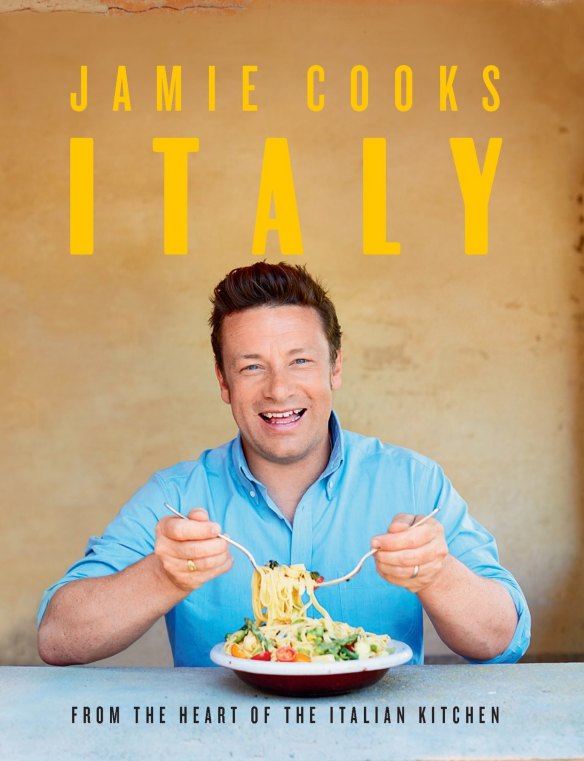
Next year will mark 20 years since Oliver debuted on television as The Naked Chef. His first job was as a pastry chef at Carluccio's Neal Street Restaurant, where he worked under Contaldo. Italian cuisine has always been his totem. In 2006 he produced Jamie's Italy, based on a similar concept of flavouring the 120 recipes with the wisdom of the "mamas", fishers and bakers.
For Oliver, a father of five, Italy is not just a cuisine but a way of life. "The Italian spirit is really inclusive and really passionate because it's driven by nonnas and that sort of nourishing family spirit, and I think I'll always have an Italian filter in my funny little English head."
But what is left for Oliver to say in revisiting a cuisine already so well traversed?
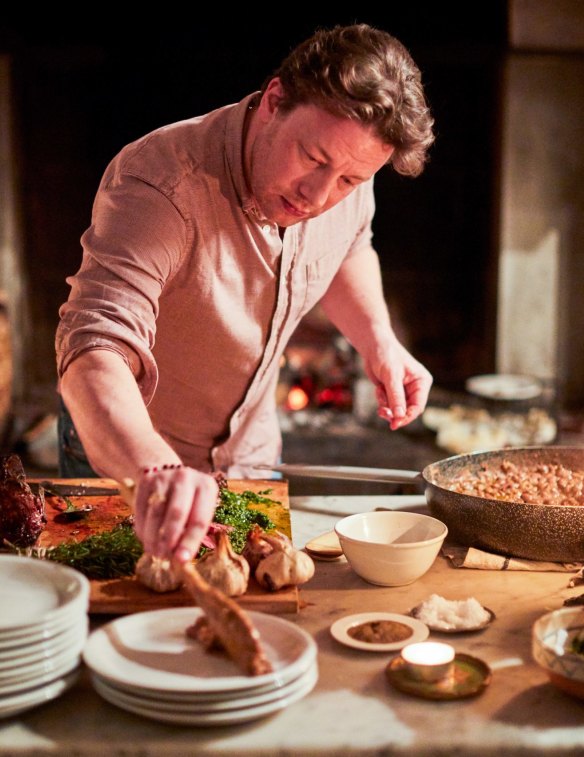
From forming delicate pasta shapes alongside an elderly woman with "hands like a teenager" and sewing squid closed with a needle and thread to mastering the art of peeling an artichoke, the reasons his production went so far over time and budget become clear.
"We cooked with the last Jewish nonna in Pitigliano [in Tuscany] and that beautiful woman taught us this artichoke recipe but she hadn't been well, so we had to talk to her for three hours again and again to get the method.
"Not just a method, but the nuance, the tiny invisible little bit, like how much do you peel it? Down to what point? Like all the kind of intimate things that only, like, a craftsman could have."
One nonna took three-hour naps. "We would have to stop production because they fell asleep!" he exclaims.
A clearly nostalgic Oliver says the nonnas' lessons extended beyond the kitchen and "to a lot of the big questions that we're asking now".
"I like talking to people. I grew up in a pub but I did a lot of listening in Italy – not so much talking. There was a lot more than food to learn from these girls," he says.
"A lot of what the nonnas were talking about bounced off around conversations around plastics, around ethics, around sustainability, around value, around access, food poverty, the concept of what is poor, what is a good way to do something or a wrong way or a right way, and how to make a lot out of a little."
His Italian sojourn also served as a period of self-reflection.
The past 12 months have been some of the hardest for Oliver, as he closed 12 Jamie's Italian restaurants – the chain he and Contaldo opened in London a decade ago. The restaurants were intended to showcase the best of Oliver's Italian recipes. Ahead of the book's release, the London restaurants have been offering a special menu serving up favourites from Jamie Cooks Italy including Nonna Marina's Salina chicken, Nonna Francesco's acqua pazza – or its wonderfully English name, fish in crazy water – and Nonna Maria's tuna fettuccine.
But whether the troubled restaurants, franchised around the world including Australia, can harmonise with Oliver's publishing success, is still an outstanding question. And Oliver knows it.
"On this [publishing] side of the business, I'm very, very in control. We do a really good job, we're profitable, we run a good business," he says.
"But you know like the restaurants are kind of our stage. It's kind of a litmus test for Britain and the reality is it's not a recession but it is a lack of confidence, it is Brexit, it's a whole bunch of shit."
But Oliver is also honest about his own role in the restaurants' woes, vowing to redraw the menu, after conducting hundreds of focus groups to find out what he needs to improve.
"It's been really tough," he says. "But what I will say is when things are really, really tough, you do have to consider everything and I think we are more connected and tuned in and I think we're learning really good lessons and I think also that's part of it."
Oliver, a self-made millionaire, has in the past experimented with his own magazine, cooking schools and his own bakeware range. Like the restaurants, not all have been instant smash hits. In fact, some have been immediate flops but, like the most successful entrepreneurs, he does not seem to let failure deter him.
"I'm only a product of constant evolution, through making myself constantly uncomfortable and putting myself in positions that are really exciting and important but also make me quite frightened."
It is the same approach he applies to his campaign for children to eat more healthily to address alarming rates of childhood obesity in Britain, Australia and the US.
He says he came away from his Italian journey determined to rachet up his campaigning, which is beginning to bear fruit in Britain, where the government has introduced a sugar tax and the mayor of London is proposing a ban on all junk food advertising on public transport.
"It also helped me underpin what the bloody hell am I doing with my job, and why do I do the sort of job that I do.
"For me it was actually reaffirming decisions I'd already made, which is equally important."
Latika Bourke travelled to Italy as a guest of Jamie Oliver.
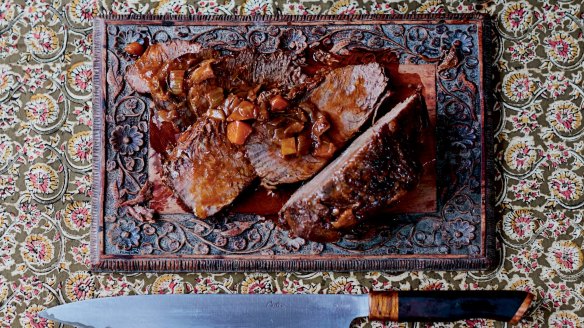
Stracotto: Beautiful slow-cooked beef ragu
A Tuscan family favourite: think the emotion of bolognese on the familiarity scale, but with a whole new level of comfort. It's inspired by Nonna Miriam from Panzano, and this simple cooking process gives you what she calls a "rich plate" – she likened it to the moment you know you've got a winning hand in poker. To serve, it's traditional to enjoy the rich sauce with freshly cooked tagliatelle as a primo, serving the rest of the sauce with the meat as a secondo, teamed with steamed greens, oozy polenta, mash or whatever you fancy!
Total time: four hours
INGREDIENTS
1kg piece of beef chuck, sinew removed
olive oil
2 red onions
2 carrots
2 cloves of garlic
2 sticks of celery
1 bulb of fennel
1⁄2 a bunch of fresh rosemary (15g)
1⁄2 a bunch of fresh sage (15g)
250ml Chianti red wine
2 tablespoons tomato puree
1.5 litres organic meat or vegetable stock
METHOD
1. Place the meat in a fairly snug-fitting casserole pan on a medium-low heat with two tablespoons of oil, turning with tongs, while you peel the onions, carrots and garlic, trim the celery and fennel, then roughly chop it all to make a soffritto – it cooks low and slow so there's no need to be too precise. Stir into the pan, tie the rosemary and sage together and add, then season with sea salt and black pepper. Cook for 20 to 30 minutes, or until starting to caramelise, stirring the veg and turning the meat occasionally.
2. Turn the heat up to high, pour in the wine, stir in the tomato puree, and let the wine cook away. Pour in the stock, bring to the boil, then place a double layer of scrunched-up wet greaseproof paper on the surface. Reduce to a low heat and cook for about three hours, or until the meat is meltingly tender, turning and basting occasionally. Season to perfection.
3. Lift the meat out onto a board, carve it into thin slices, and spoon over enough of that incredible sauce to keep it nice and juicy. Toss the rest of the sauce (reduce on the stove, if needed) with freshly cooked tagliatelle, and finely grate over a little Parmesan, to serve. Double win.
Serves 8
Calories 360kcal, fat 20.6g, sat fat 7.2g, protein 30.6g, carbs 8g, sugar 6.2g, salt 0.7g, fibre 2.6g
Jamie Cooks Italy by Jamie Oliver is published by Penguin Random House © Jamie Oliver Enterprises Limited (2018 Jamie Cooks Italy). Photography: David Loftus.
Restaurant reviews, news and the hottest openings served to your inbox.
Sign up